Tuesday, May 15th 2012

AMD Launches the Second-Generation A-Series APUs
AMD today announced the widely anticipated launch of its 2nd-Generation AMD A-Series Accelerated Processing Units (APUs) for mainstream and ultrathin notebooks, All-in-One and traditional desktops, home theater PCs and embedded designs.
The 2nd-Generation A-Series APU, codenamed "Trinity", is a grounds-up improved design over the previous generation, enabling a best-in-class PC mobility, entertainment, and gaming experience. New features of the product design include:
● Double the performance per watt of the previous generation;
● The AMD HD Media Accelerator with a unique set of technologies designed to optimize video quality available with premium and Internet video content, and accelerate video file conversion;
● An increase in CPU performance of up to 29 percent with higher processor speeds thanks to the next-generation AMD "Piledriver" CPU core with 3rd-Generation AMD Turbo Core technology, where power is dynamically shifted between the CPU and GPU depending on application needs, effectively providing a more responsive experience that can boost CPU frequencies to up to 3.2 GHz;● AMD Radeon HD 7000 Series graphics for an increase of graphics performance up to 56% over the previous generation. Combined, the CPU and GPU cores deliver more than 700 gigaflops of computing performance - several times more than the fastest x86 CPUs - to boost performance of hundreds of applications;
● Up to 12 hours of battery life through CPU and GPU power enhancements, with clear battery life leadership in notebook form factors.
"The latest OEM notebooks, ultrathins, All-in-Ones and desktops based on the new AMD A-Series APU enable the best video and gaming experiences, highly responsive performance with AMD Turbo CORE, and accelerate an ever-increasing range of productivity and multimedia applications -- in sleek, stylish designs at price points that make sense," said Chris Cloran, corporate vice president and General Manager, AMD Client Business Unit. "Our 2nd-Generation AMD A-Series APU is a major step forward in every performance and power dimension, allowing users to enjoy a stunning experience without having to give up the things that matter to them most. This experience doesn't stop at mainstream notebooks. It carries over into affordable ultrathin form factors featuring the latest in AMD Radeon graphics."
The Growing AMD Accelerated Application Ecosystem
The developer ecosystem continues to gravitate to the unmatched level of compute and unique processing capabilities of the APU as more than 100 applications and games are now accelerated by AMD APUs. The 2nd-Generation AMD A-Series APU gives users superior Web-based video experience thanks to plug-ins for Google Chrome, Firefox and Internet Explorer 9 that make it easy for consumers to turn on AMD Steady Video technology. Recent applications that have been optimized for use on AMD A-Series APUs include Adobe Photoshop CS6, WinZip 16.5 and VLC Media Player. AMD A-Series APUs are also well-positioned to take advantage of the upcoming transition to the Windows 8 operating system.
"We are excited for the introduction of the 2nd-Generation AMD A-Series APU and are confident it will continue the great work Microsoft and AMD have done together on the A-Series APU," said Aidan Marcuss, senior director, Windows Business Planning, Microsoft Corp. "We look forward to seeing the A-Series APU in action with Windows 8 to deliver a great user experience across a variety of hardware."
For developers who want to engage in the industry's move toward heterogeneous computing, the upcoming AMD Fusion Developer Summit will offer them a unique opportunity to enhance their knowledge base. More information on AFDS can be found here.
Unmatched Mobility
With more than 12 hours of 'resting' battery life, AMD is now an industry leader in notebook battery-life performance. The 2nd-Generation AMD A-Series APU delivers increased levels of performance, while consuming half the power as its predecessor.
These gains can be attributed to the new power-optimized "Piledriver" CPU core, as well as to AMD Start Now technology, which is designed to maximize system responsiveness by quickly entering and exiting low power states. With AMD Start Now, the computer resumes from sleep mode in as few as two seconds and boots to the desktop in as few as 10 seconds.
In ultrathin form factors, AMD enables an uncompromised visual experience thanks to a power-efficient and premium AMD Radeon graphics engine. Consumers can expect to see ultrathin notebooks based on dual-core 17-watt and quad-core 25-watt AMD A-Series APUs. These products will be easily identifiable by aluminum-styled VISION Technology stickers at a range of competitive price points.
Best-in-class Entertainment
As more and more people turn to their computers as the hub for their entertainment, the visual aspect of computing becomes ever more important. To enhance these capabilities, AMD created the AMD HD Media Accelerator - a unique set of technologies that enable the best video quality on a PC. Key features of the HD Media Accelerator include:
● AMD Perfect Picture HD - An image, video processing and display technology that automatically makes images and video better with color vibrancy adjustments, edge enhancement, noise reduction and dynamic contrast fixes;
● AMD Steady Video Technology - A technology that enables smooth playback of jittery video content with a single button click thanks to plug-ins for popular Web browsers and multimedia applications;
● AMD Quick Stream Technology - A new technology that prioritizes video streaming on PC systems for a smooth, virtually uninterrupted video stream;
● True HD video chat with up to four people at once;
● AMD Video Converter - A video compression engine for fast conversion and sharing of media files across multiple formats and devices;
● Full decode support for H.264, MPEG-2, VC-1, MVC, DivX and WMV.
Gaming Leadership
The 2nd-Generation AMD A-Series APU builds on AMD's legacy of gaming leadership with an increase in graphics performance of up to 56% over the previous generation and support for:
● AMD Eyefinity Technology - For the first time, this immersive technology is available from an APU without the need for a discrete graphics card;
● Performance-leading DirectX 11 graphics architecture and 1080p gaming a life-like level of detail;
● AMD Radeon dual graphics support that delivers a performance boost of up to 75 percent when adding a discrete graphics card to the APU. The AMD Radeon dual graphics option also offers support for DirectX 9 for older game titles, and uses new AMD CrossFire Technology Profiles for easier updates.
Availability and Technical Details
AMD has a record number of design wins with companies like Acer, Asus, HP, Lenovo, Samsung, Sony and Toshiba based on our 2nd-Generation AMD A-Series APUs and VISION Technology from AMD, with mainstream and ultrathin notebooks as well as embedded solutions, available beginning today.Desktops systems and component channel parts will be available later this year.
The 2nd-Generation A-Series APU, codenamed "Trinity", is a grounds-up improved design over the previous generation, enabling a best-in-class PC mobility, entertainment, and gaming experience. New features of the product design include:
● Double the performance per watt of the previous generation;
● The AMD HD Media Accelerator with a unique set of technologies designed to optimize video quality available with premium and Internet video content, and accelerate video file conversion;
● An increase in CPU performance of up to 29 percent with higher processor speeds thanks to the next-generation AMD "Piledriver" CPU core with 3rd-Generation AMD Turbo Core technology, where power is dynamically shifted between the CPU and GPU depending on application needs, effectively providing a more responsive experience that can boost CPU frequencies to up to 3.2 GHz;● AMD Radeon HD 7000 Series graphics for an increase of graphics performance up to 56% over the previous generation. Combined, the CPU and GPU cores deliver more than 700 gigaflops of computing performance - several times more than the fastest x86 CPUs - to boost performance of hundreds of applications;
● Up to 12 hours of battery life through CPU and GPU power enhancements, with clear battery life leadership in notebook form factors.
"The latest OEM notebooks, ultrathins, All-in-Ones and desktops based on the new AMD A-Series APU enable the best video and gaming experiences, highly responsive performance with AMD Turbo CORE, and accelerate an ever-increasing range of productivity and multimedia applications -- in sleek, stylish designs at price points that make sense," said Chris Cloran, corporate vice president and General Manager, AMD Client Business Unit. "Our 2nd-Generation AMD A-Series APU is a major step forward in every performance and power dimension, allowing users to enjoy a stunning experience without having to give up the things that matter to them most. This experience doesn't stop at mainstream notebooks. It carries over into affordable ultrathin form factors featuring the latest in AMD Radeon graphics."
The Growing AMD Accelerated Application Ecosystem
The developer ecosystem continues to gravitate to the unmatched level of compute and unique processing capabilities of the APU as more than 100 applications and games are now accelerated by AMD APUs. The 2nd-Generation AMD A-Series APU gives users superior Web-based video experience thanks to plug-ins for Google Chrome, Firefox and Internet Explorer 9 that make it easy for consumers to turn on AMD Steady Video technology. Recent applications that have been optimized for use on AMD A-Series APUs include Adobe Photoshop CS6, WinZip 16.5 and VLC Media Player. AMD A-Series APUs are also well-positioned to take advantage of the upcoming transition to the Windows 8 operating system.
"We are excited for the introduction of the 2nd-Generation AMD A-Series APU and are confident it will continue the great work Microsoft and AMD have done together on the A-Series APU," said Aidan Marcuss, senior director, Windows Business Planning, Microsoft Corp. "We look forward to seeing the A-Series APU in action with Windows 8 to deliver a great user experience across a variety of hardware."
For developers who want to engage in the industry's move toward heterogeneous computing, the upcoming AMD Fusion Developer Summit will offer them a unique opportunity to enhance their knowledge base. More information on AFDS can be found here.
Unmatched Mobility
With more than 12 hours of 'resting' battery life, AMD is now an industry leader in notebook battery-life performance. The 2nd-Generation AMD A-Series APU delivers increased levels of performance, while consuming half the power as its predecessor.
These gains can be attributed to the new power-optimized "Piledriver" CPU core, as well as to AMD Start Now technology, which is designed to maximize system responsiveness by quickly entering and exiting low power states. With AMD Start Now, the computer resumes from sleep mode in as few as two seconds and boots to the desktop in as few as 10 seconds.
In ultrathin form factors, AMD enables an uncompromised visual experience thanks to a power-efficient and premium AMD Radeon graphics engine. Consumers can expect to see ultrathin notebooks based on dual-core 17-watt and quad-core 25-watt AMD A-Series APUs. These products will be easily identifiable by aluminum-styled VISION Technology stickers at a range of competitive price points.
Best-in-class Entertainment
As more and more people turn to their computers as the hub for their entertainment, the visual aspect of computing becomes ever more important. To enhance these capabilities, AMD created the AMD HD Media Accelerator - a unique set of technologies that enable the best video quality on a PC. Key features of the HD Media Accelerator include:
● AMD Perfect Picture HD - An image, video processing and display technology that automatically makes images and video better with color vibrancy adjustments, edge enhancement, noise reduction and dynamic contrast fixes;
● AMD Steady Video Technology - A technology that enables smooth playback of jittery video content with a single button click thanks to plug-ins for popular Web browsers and multimedia applications;
● AMD Quick Stream Technology - A new technology that prioritizes video streaming on PC systems for a smooth, virtually uninterrupted video stream;
● True HD video chat with up to four people at once;
● AMD Video Converter - A video compression engine for fast conversion and sharing of media files across multiple formats and devices;
● Full decode support for H.264, MPEG-2, VC-1, MVC, DivX and WMV.
Gaming Leadership
The 2nd-Generation AMD A-Series APU builds on AMD's legacy of gaming leadership with an increase in graphics performance of up to 56% over the previous generation and support for:
● AMD Eyefinity Technology - For the first time, this immersive technology is available from an APU without the need for a discrete graphics card;
● Performance-leading DirectX 11 graphics architecture and 1080p gaming a life-like level of detail;
● AMD Radeon dual graphics support that delivers a performance boost of up to 75 percent when adding a discrete graphics card to the APU. The AMD Radeon dual graphics option also offers support for DirectX 9 for older game titles, and uses new AMD CrossFire Technology Profiles for easier updates.
Availability and Technical Details
AMD has a record number of design wins with companies like Acer, Asus, HP, Lenovo, Samsung, Sony and Toshiba based on our 2nd-Generation AMD A-Series APUs and VISION Technology from AMD, with mainstream and ultrathin notebooks as well as embedded solutions, available beginning today.Desktops systems and component channel parts will be available later this year.
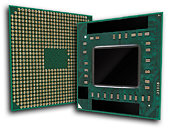
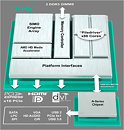
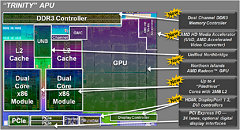
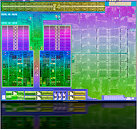
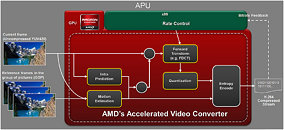
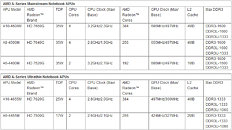
40 Comments on AMD Launches the Second-Generation A-Series APUs
Looks promising to me... :)
www.anandtech.com/show/5831/amd-trinity-review-a10-4600m-a-new-hope
The HD4000 integrated GPU on Ivy Bridge processors is about the same thing as a 7660G. 20% better in some scenarios for the AMD integrated GPU is really poor performance if you ask me, especially for a part designed to offer much better GPU performance than the competitor. And also AMD's heterogeneous computing doesn't even come close to what the competitor offers (maybe it will in the future with updated drivers, but at the moment it's nothing to be proud of).
So in the end, what does this part do that is good? It's better than the previous generation, and that's about it.
From what I see, my i5 2410M + GT540M laptop is better in every possible way than the A10-4600, and what I have is already a year and some months old and is about in the lower midrange of performance level when it comes to laptops.
I would have loved to buy an AMD laptop, but sadly the performance isn't even there, it is a step forward, but not a big one.
- AMD still stuck on 32nm(not even 28nm) v/s INTEL's 22nm
- CPU Performance doesn't even BEAT the A8-3500(Llano 35W model) even with higher clocks, under most scenarios
- GPU barely makes it past Intel HD4000(Intel has done an admirable job, Haswell will be 3x this)
- Cheap Ivy Bridge Dual Core Laptops with HD4000 would beat AMD's 25W Quad Core/Low Voltage both in power efficiency, performance and price.
I'm surprised why AMD didn't go for a 45W Model, which had slightly higher clocks both for CPU and GPU(more on the GPU, the only powerful thing in there). A 45W model with say:
- 2.4GHz CPU(~3.4GHz Turbo)
- 900MHz GPU(on Turbo)
could make a world of a difference..
Newegg laptop list of PC's faster than an A10 for under $700; PCs & Laptops, Laptops / Notebooks, Laptops / Not...
One refurbished, and the other two are on sale below $700 but are usually above.So a Radeon HD 7970 barely makes it past a Radeon HD 6870? Did you even really look at the GPU scores?...
Also the CPU tests don't quite make sense to me.. bulldozer wasn't that bad, averaging 10-20% less clock-for-clock vs llano... so did IPC drop when it was supposed to increase or is there a severe issue with the floating point unit the cause of the low CPU scores here? Because integer performance should have increased... :confused:
And I would like to see a 45w part too. Perhaps later on with an MX name?
And we'll be seeing 22nm next year with steamroller cores, GCN cores, and HSA. The true hope is a year away... I hope. :toast:
- Who cares?
- No idea yet
- False
- False
Desktop variants could be interesting though when overclocked, good replacements for Quad Core Phenom II as supply of those finally drys up.
Think for power consumption too; the GT540M suck 35W, Intel I5 another 35W which altogether exactly double than Trinity's 35W. In High setting gaming profile the performance about the same, while Trinity laptop significantly runs cooler and stays more quiet.
Acer Aspire AS4830TG-6808 Notebook Intel Core i5 2... just 680$ and probably going lower as the new Ivy Bridge i5 laptops come to the market.
Do you see the prices on most A series laptops?
PCs & Laptops, Laptops / Notebooks, Laptops / Not...
The cheaper laptops sure are in their own segment, but the higher performance A series laptops are in the 600$ range, where you can just put maybe 100$ more and get a lot more performance. Unless A10 4600 Laptops cost around 500$, I see no reason why people would buy them.Do you think you can play anything on high settings on a Trinity APU? On anything in this performance class you really can't play anything on high settings unless you lower the resolution a lot. True, the GT540 + Intel i5 solutions suck more power when gaming, but you do have graphics switching, when I don't do any gaming my laptop uses the processor IGP (you can see the normalized battery consumption tests: www.anandtech.com/show/5831/amd-trinity-review-a10-4600m-a-new-hope/8 where the A10 is about the same as a i5 2410, and the Intel CPU is quite a bit more powerful).
Cooler and more quiet has to do more with the laptop manufacturer implementation, the fan on my cheap Acer doesn't even run when I'm not playing games.
In this price range, you're looking at things from the opinion of an enthusiast. Look at it from the perspective of an average consumer not looking to pay more than $500, $600 tops.
2: Yes, I expect to play a number of things at high settings. I have a Phenom II quad core CPU at 2ghz, and a Radeon HD 4250, yet I'm able to play Crysis 2 at 720 and get 20-24fps average with low detail settings. Important to note that- they used medium settings, which could be for or against it. Also consider drivers. This is pre-production, and the driver support isn't there yet, unlike the well matured drivers for the GTX 500 series cards. We may see performance increases yet.
www.engadget.com/2012/05/08/hp-envy-spectre-xt-ultrabooks-sleekbooks/
The difference between the HP AMD and Intel 'sleekbooks' as they call them is 100$, not 300+$ as you wrote above.
An average consumer probably won't need a mid range GPU so they can get a 400$ Intel i3 or maybe even an AMD E350.
2. Drivers aren't going to turn a mid range GPU into a beast, most you can expect are a couple % here and there. And if you want to play things on high settings better stay away from laptops or be prepared to fork out over 1000$.Call of Duty isn't really all that relevant considering they use the same engine for the past several games. Like I've said above, if people want to play games on high settings, they better stay away from <1000$ laptops.So voicing my opinion that the new generation isn't such a major improvement over the old one is bashing? If they price laptops at around 500$ or less, then it's going to be pretty popular, otherwise, not so much.
Also for games many people pointed it out but many still fail to see it, the testing approach that was taken in the review is that for testing cpu and not the gpu, whwn testing a gpu you run iton highersettings so u can eliminate cpu bottleneck out of the question and stress the gpu regardless on what they believe trinity is designed for. While with anand review its like they skewed things a bit that the fps impact is due to the epic fast higher end i7 cpu beast and NOT an impact of the hd4000, as far as i know hd4000 on its own can barely match a llano a6 graphics
One thing the review also didnt really mentiIon is the larger software optimized for trinity and howfar they have got in hsa, ive seen this chinese review on trinity that lists all the new software optimized for trinity which at the end of the day is what it all comes down too.
EDIT: www.expertreviews.co.uk/laptops/1292020/amd-trinity-review-hands-on-with-a-prototype-laptop
check the second page for graphics and see how running the game on higher settings yields a much bigger gap in performance compared to llano, doing 38fps vs 27fps on llano in dirt 3 compared to the almost identical performance in lower settings when ran by anand
this review isnt in depth at all either, but just saw that one example that only supports my point
also here is the chinese review i was talking about, use google translate to read it, but im not sure how legit this is but still interesting read
notebook.pconline.com.cn/testing/contrast/1205/2781947_all.html#content_page_1
2: Drivers won't make it a beast, but let's face it, some games just need decent drivers to run well. And it will expand the gap between the chips farther on the graphics end.